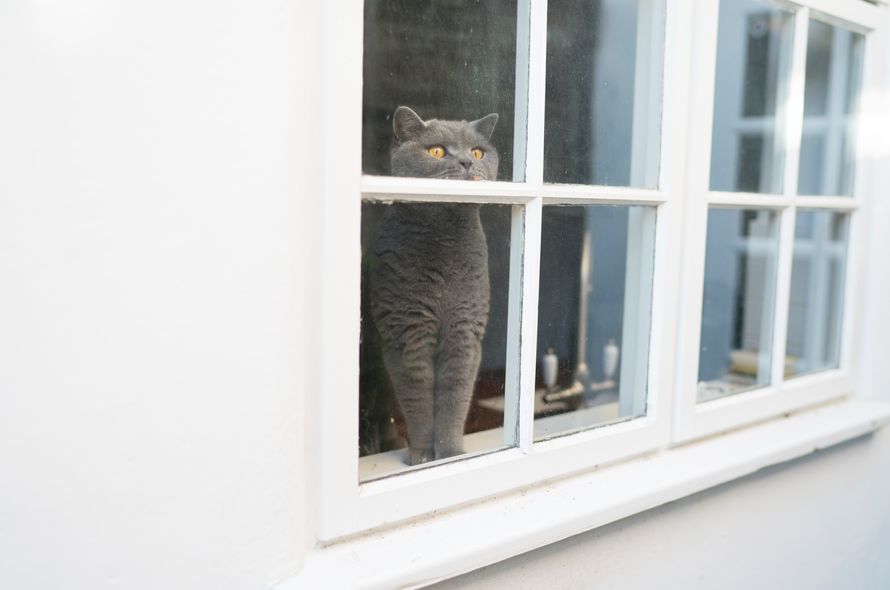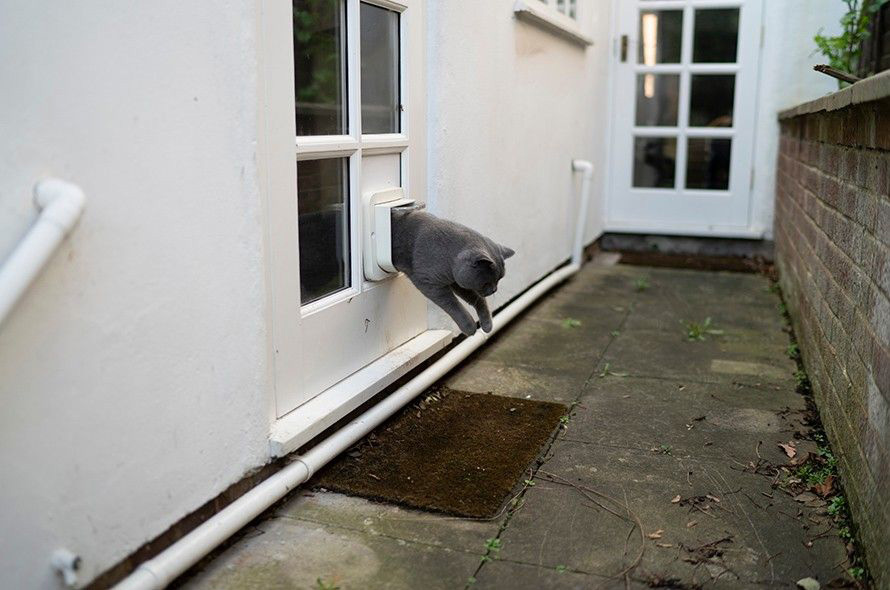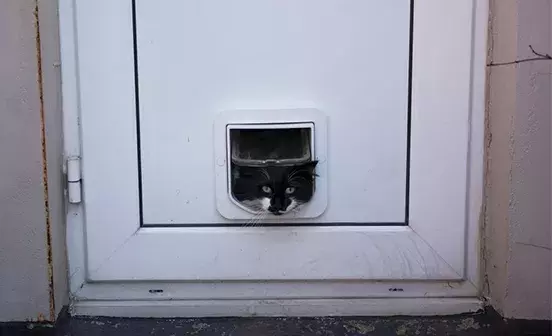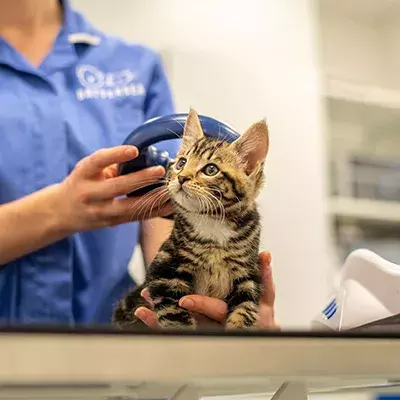It's likely that your cat will want to go out and explore the garden and beyond. Our tips help ensure your cat can explore the outside safely when you let them out for the first time and make their way home again too.

It’s best to make sure your cat is settled indoors and comfortable around you before starting to introduce your cat to the outside or letting them outside for the first time.
Some cats will immediately start wanting to go outside regularly, but some less-confident cats, kittens, or cats who might not have been outside before may want to build up the amount of time they spend outside.
It’s important to let your cat explore outside in their own time. We wouldn’t recommend using a harness, and you shouldn’t pick your cat up and carry them outside. Both of these situations could potentially cause your cat stress and may result in them associating this negative feeling with going or being outside.
HOW LONG TO WAIT BEFORE LETTING YOUR CAT OUTSIDE
ADULT CATS
How long you leave it before letting your cat outside depends on the cat's personality and how quickly they settle. You may be tempted to let your cat outside as soon as possible, but generally it's best to allow at least 2-3 weeks and up to 4-6 weeks after you first take them home. This will give them plenty of time to settle in their new environment.
KITTENS
The timescale is slightly different for kittens. We would recommend letting your kitten out with supervised access to the outside once they’re about 4 months old, and have been neutered, had all their vaccinations, and are fully settled into your home. You should also make sure your kitten seems confident enough in the house first as going outside can be a little daunting to begin with.
If your new cat or kitten seems restless and is frequently sitting or waiting by the back door, pacing, scratching, or pawing at the door area, contact Battersea or your local vet for further advice about the best time to start letting your cat outside.
HOW TO PREPARE YOUR CAT FOR THE OUTSIDE

BEFORE YOU LET YOUR CAT OR KITTEN OUTSIDE:
- Make sure your cat can be identified. A Battersea cat will already be microchipped, so if your cat is scanned, the chip will be linked to your contact details.
- Even if your cat has been microchipped, it can also be a good idea for your cat to wear a quick release safety collar with an ID tag containing your details (but only if your cat will tolerate wearing one). This will mean you can be readily contacted by anyone if your cat becomes injured or goes missing, without your cat needing to be taken to a vet to be scanned. Remember to keep your cat’s microchip details up to date.
- Make sure your outside space or garden is safe, cat-friendly and inviting for your cat. Doing this can also encourage them not to wander too far.
- In preparation for letting your cat outside, you can try to teach them to come to you when called, using treats. To do this, simply call your cat’s name and shake a tub or packet containing their favourite treats. When your cat comes to you, give them a treat. Repeat this process several times in different locations around the house until your cat always comes and finds you when you call their name. If your cat is initially reluctant to come when called, try doing this around feeding time when they are expecting to get fed and may be more eager to approach you for food. If your cat isn’t very food motivated, you could try rewarding them with something else such as their favourite cat toy, a chin tickle or verbal praise (e.g. “good girl/boy”). For more information, have a look at our advice on basic cat training.
THE FIRST TIME YOU LET YOUR CAT OR KITTEN OUTSIDE:
- The first few times you let your cat outside, it’s a good idea to go with them. Go outside and leave the door to the house open so that your cat is able to join you but can also quickly get back inside if they want.
- Take a food/toy reward out with you and sit down quietly. This way you can keep an eye on your cat while letting them explore freely and call them back if you feel like they’ve wandered too far. You should build up the length of time your cat is outside over a few sessions.
- While you’re outside you can also continue to train your cat to come when called. Make sure that you don’t always take them back inside straight away when they’re called. Sometimes, simply reward them and let them wander off again so that they don’t associate coming back to you with having to go inside, especially if they’re keen to stay out and explore!
- When your cat seems comfortable and relaxed being outside, you can start to let them come and go unaccompanied.
- The best way to give your cat consistent and predictable access to the outdoors when they need it is to install a cat flap in a door or window. Take a look at our advice on cat flaps for further information.



